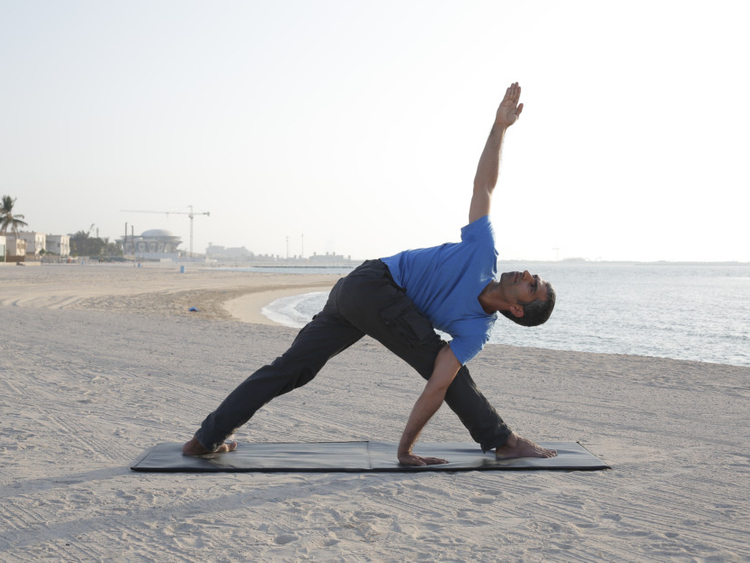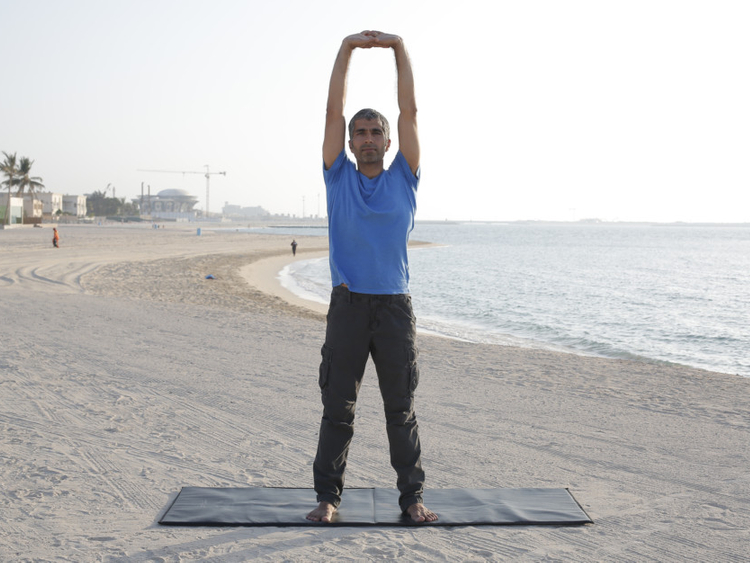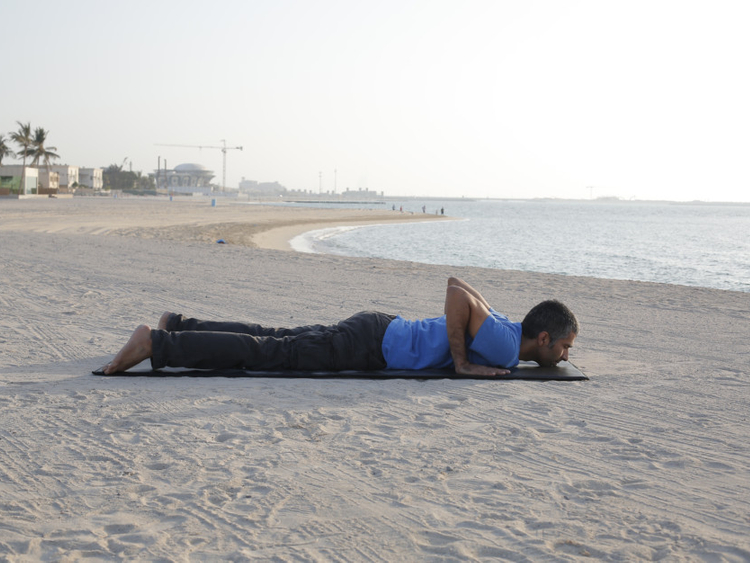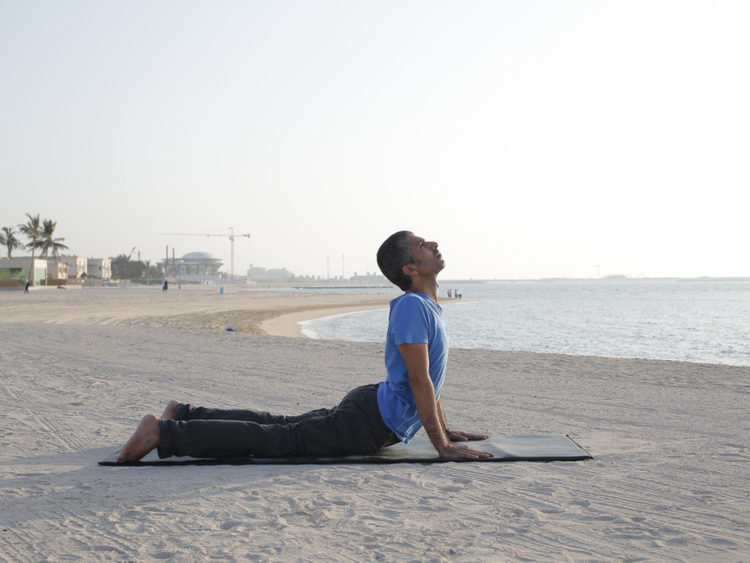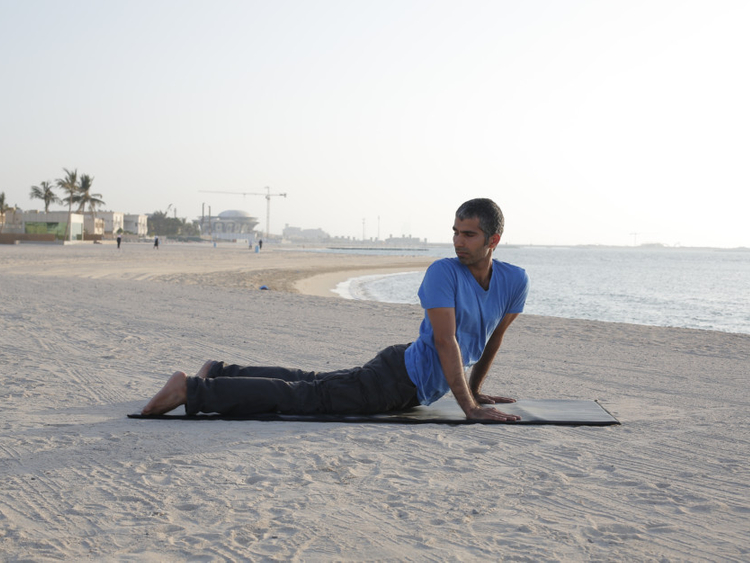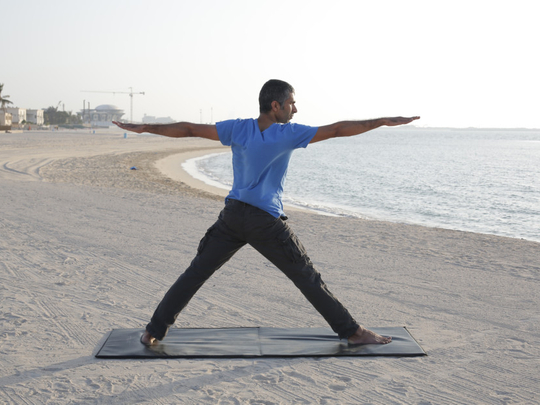
The next technique ujjayi pranayama is versatile and can be practised by anyone while standing, sitting or lying down. The Sanskrit word ‘ujjayi’ means victorious. It is also known as the psychic breath, as it leads to subtle states of mind. It is a tranquilising pranayama and also has a heating effect on the body. One can begin by practising yogic breathing in order to relax and bring the mind to concentrate.
Yogic breathing
Sit in any comfortable position, preferably in padmasana (lotus pose) or vajrasana (diamond pose), or lie in shavasana (corpse pose) on the back with feet about shoulder width, palms facing upward and the entire body relaxed.
Inhale deeply and slowly to fill the abdomen as it is pushed outward and then breathe in more to fill the lungs, as the chest expands outward and upward.
Exhale slowly and gently, expelling the air from the lungs first as the chest drops and contracts, then from the abdomen, as it slowly contracts. This is one full breath. The breathing should remain smooth and continuous without any breaks or jerks in between. Practise 15-20 rounds.
Ujjayi Pranayama
Once the breathing is calm and rhythmic, shift the awareness to the throat. Breathe in and out through the throat as if inhalation and exhalation are taking place through a channel or hole in the throat.
Gently contract the glottis so that a soft snoring sound – like that of a sleeping baby – is produced in the throat. Glottis is the vocal apparatus of the larynx.
Both inhalation and exhalation should be long, deep and controlled.
Practise yogic breathing while concentrating on the sound produced by the breath in the throat. The sound should not be very loud. It should just be audible to the practitioner but not to another person unless they are sitting very close.
Practise 15-20 rounds every day. Best time to practise is either morning or just before going to sleep.
After becoming proficient, ujjayi may be performed with Jalandhar bandha (throat lock) which means the breath is retained and the chin is pressed tightly against the chest for 10 seconds between the inhalation and exhalation. After 10 seconds, lift the chin up and exhale. Do not strain.
Benefits
- This practice can help soothe the nervous system and calm the mind. It has a relaxing effect at the physical, mental and psychic level.
- It helps to relieve insomnia and may be practised in shavasana just before sleep.
- The basic form without breath retention or bandhas slows down the heart rate and is useful for people suffering from high blood pressure. People suffering from heart diseases should avoid breath retention.
- Ujjayi also alleviates fluid retention.
Practice of the week
These postures help improve lung capacity by working on the inter-coastal muscles and the shoulders.
Triyaka Tadasana
Parivritta Trikonasana
Triyaka Bhujangasana
Next week: Understanding Pranayama - Part 8
— This is an interactive series, in which we bring you practical tips on daily living, inspired by the vision of yoga. Write in to tabloid@gulfnews.com with your questions and doubts regarding enhancing your lifestyle through yoga. For more information, call 800-YOGA (9642) or log on to artisticyoga.com



